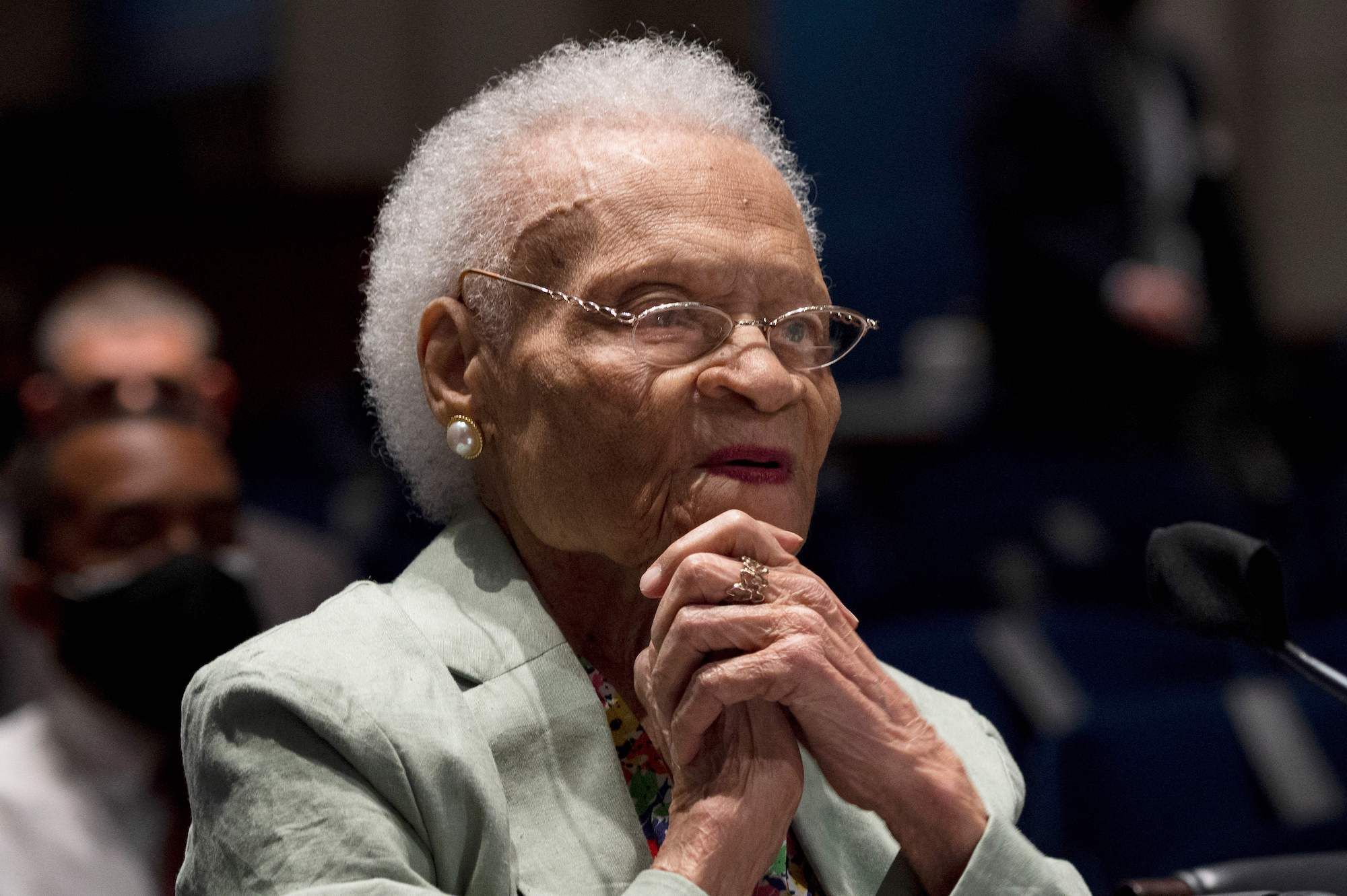Viola Ford Fletcher is also still waiting for justice.
By TONY NORMAN • Pittsburgh Post-Gazette
America has been telling Viola Ford Fletcher to wait for justice ever since she was 7 years old. Now a spry 107, Fletcher is running out of patience with America.
Delivered by midwife on a farm in Lawton, Okla., on May 10, 1914, Fletcher was born 138 years after the American experiment commenced in 1776.
As a Black daughter of Oklahoma, she had no more reason to believe in America’s promises than the Native Americans moved unceremoniously from rich farming and mining land they had negotiated in treaties to end the Indian wars.

Fletcher would witness another century of broken promises from a country that acts like an incorrigible deadbeat whenever the subject of justice comes up. America is more than twice her age now, but still disposed to gaslighting her, lecturing her about how it isn’t racist and telling her to wait.
No wonder Fletcher is tired of waiting. She’s already waited through two pandemics, many decades of Jim Crow, the Depression, World War II, the births and deaths of several of her children and a second global economic meltdown.
In her lifetime, she’s seen 18 presidents, including a Black one, come and go, so she no longer suffers from the delusion that anyone sitting in the White House hears her or has the inclination or the power to address the issue she cares most about.
Last year, Fletcher and several other Americans, including her little brother Hughes Van Ellis, a mere stripling at 100, and Lessie Benningfield Randle, 106, decided it was time to file suit against Oklahoma and force a serious discussion about a crime that occurred before her very eyes.
As part of her legal strategy, Fletcher traveled to D.C. last week to testify before the House Judiciary Committee about crimes that took place on May 31 and June 1, 1921, in the Greenwood section of Tulsa.

“I still see Black men being shot, Black bodies lying in the street,” Fletcher said in a clear voice reading from a prepared statement. “I still smell smoke and see fire. I still see Black businesses being burned. I still hear airplanes flying overhead. I hear the screams. I have lived through the massacres every day.”
Three hundred Black people are believed to have been murdered by hundreds of white men who descended on the Greenwood district in response to a bogus rape claim that implicated a Black teenager.
Over the course of two days, 1,200 homes were destroyed and 10,000 people were displaced by raging fires. An estimated 30 blocks of Black-owned businesses and homes were destroyed and 800 Black people were wounded. Hundreds were arrested for either defending themselves or merely existing while Black in Greenwood during two horrific days of looting, rape and killing.
Fletcher and her family escaped in a horse and buggy and lived in a tent in the woods through part of the following winter. They were lucky, relatively speaking. When they returned to Tulsa, Greenwood was gone and no one had been arrested for the carnage that had wiped it off the map. No one talked about it openly. It was as if a whole community had been “raptured” by God instead of murdered.
Finish reading here
Photos courtesy of
Star Tribune
University of Tulsa via AP Crowds of people watch fires during the Tulsa Race Massacre on June 1, 1921, in Tulsa, Okla.

Comments (0)